
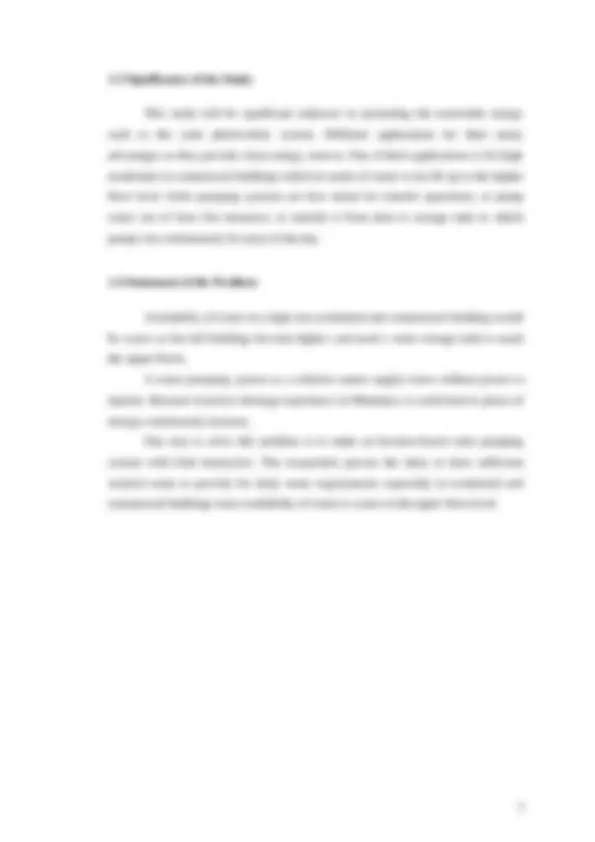
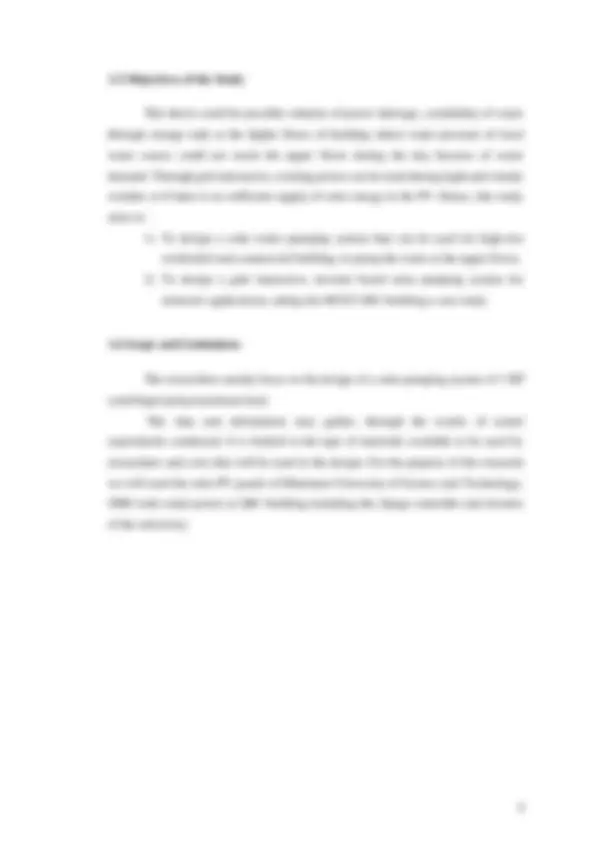
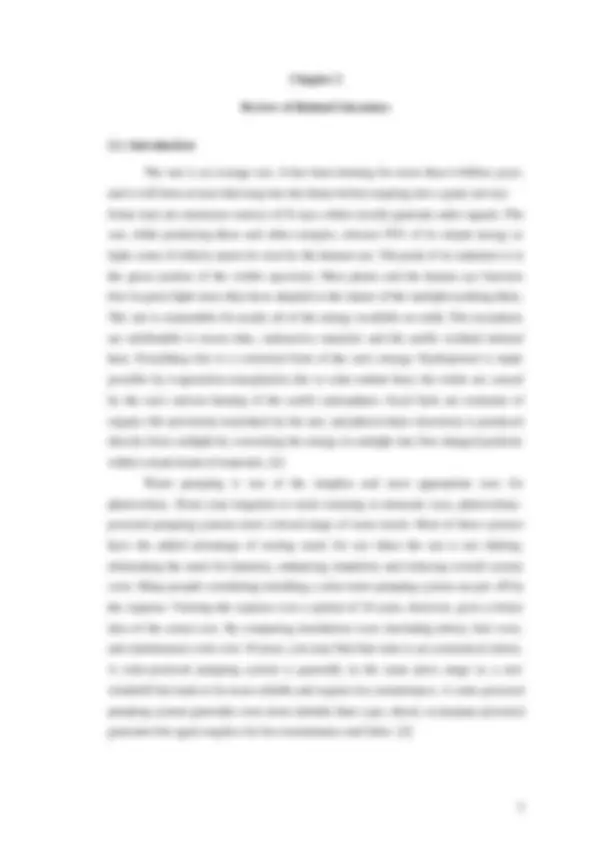

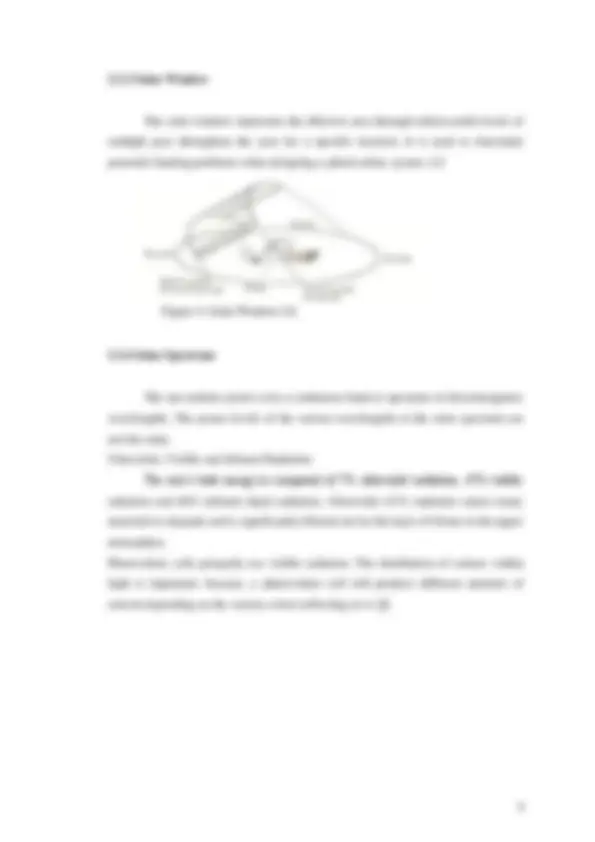
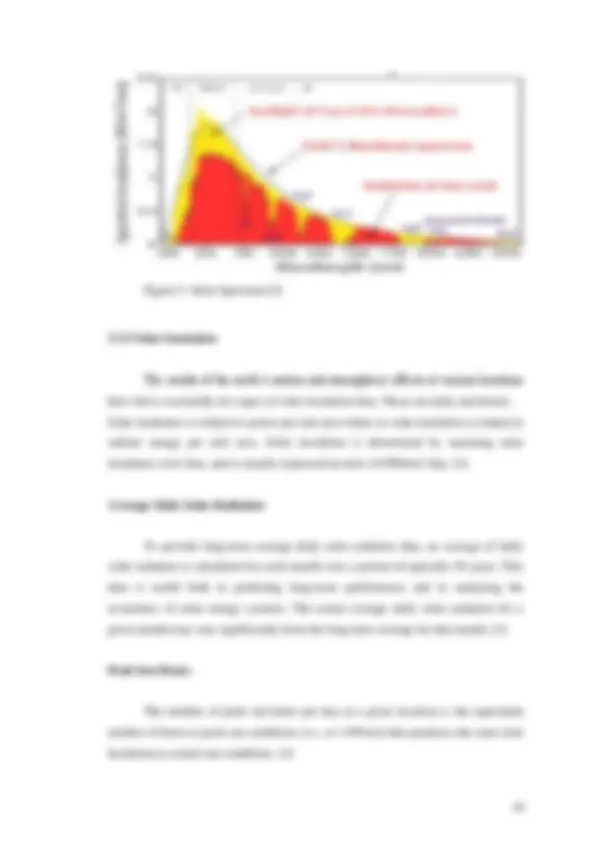
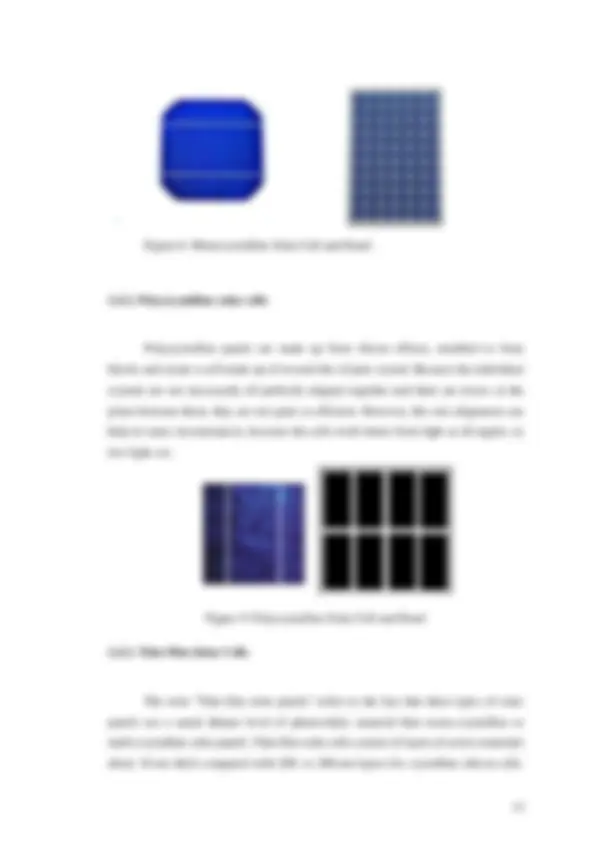

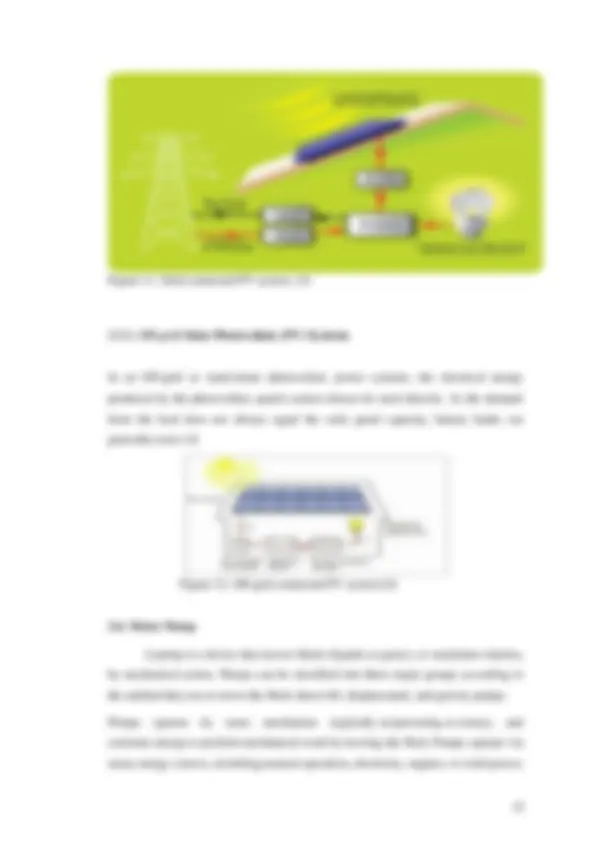


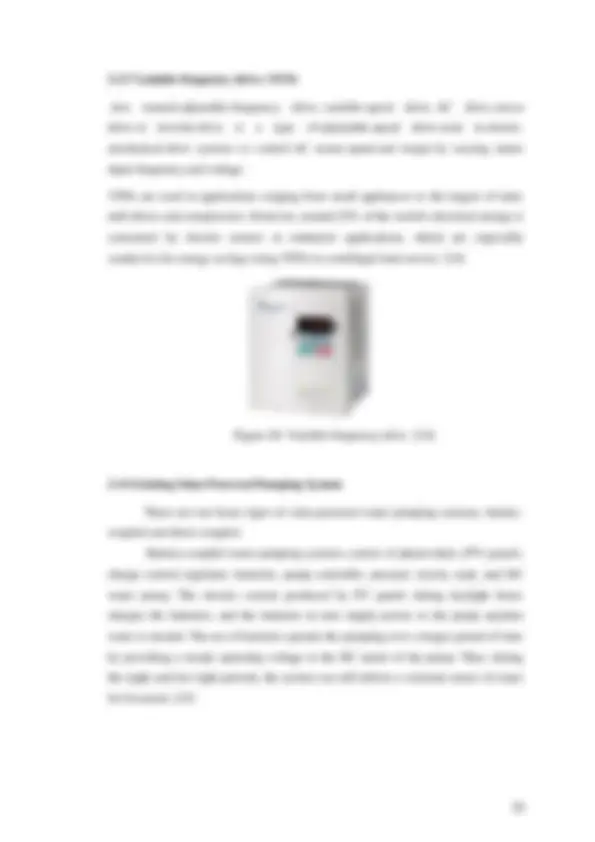
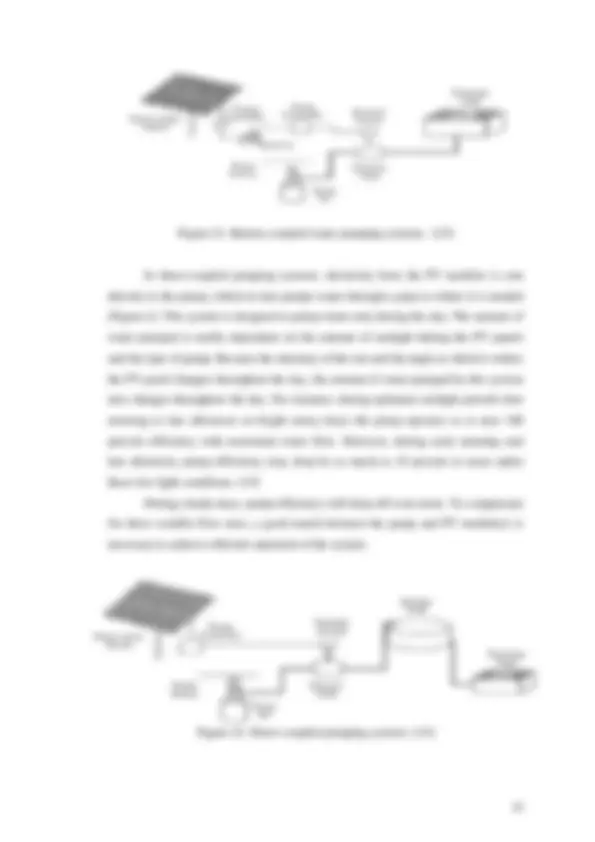
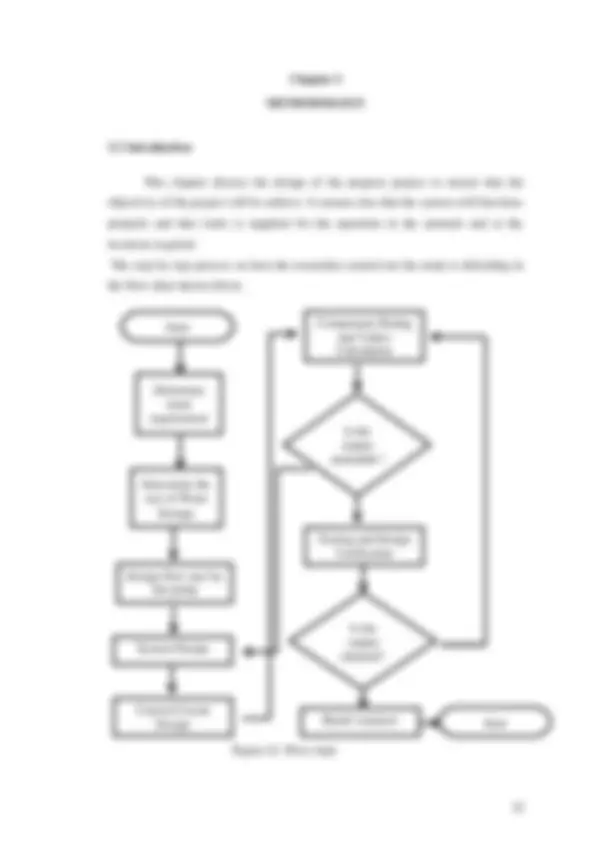
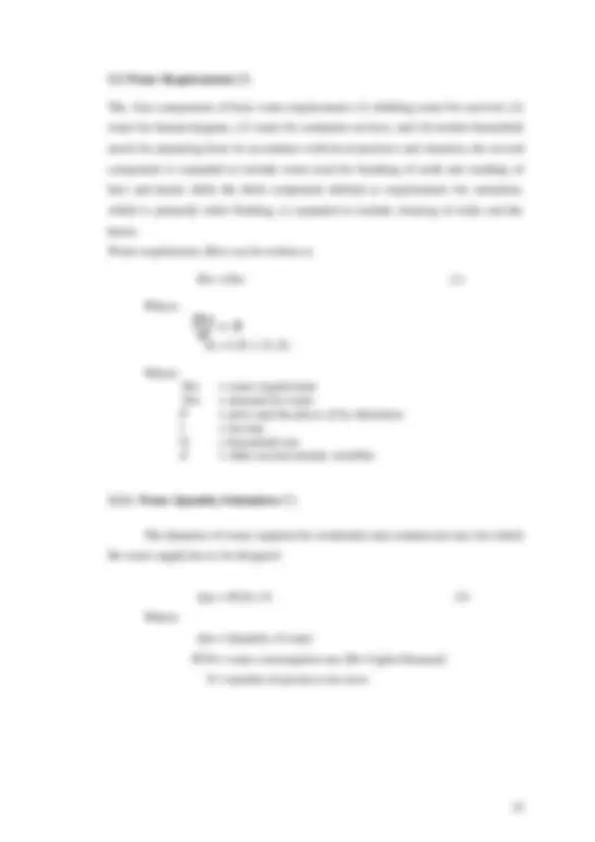

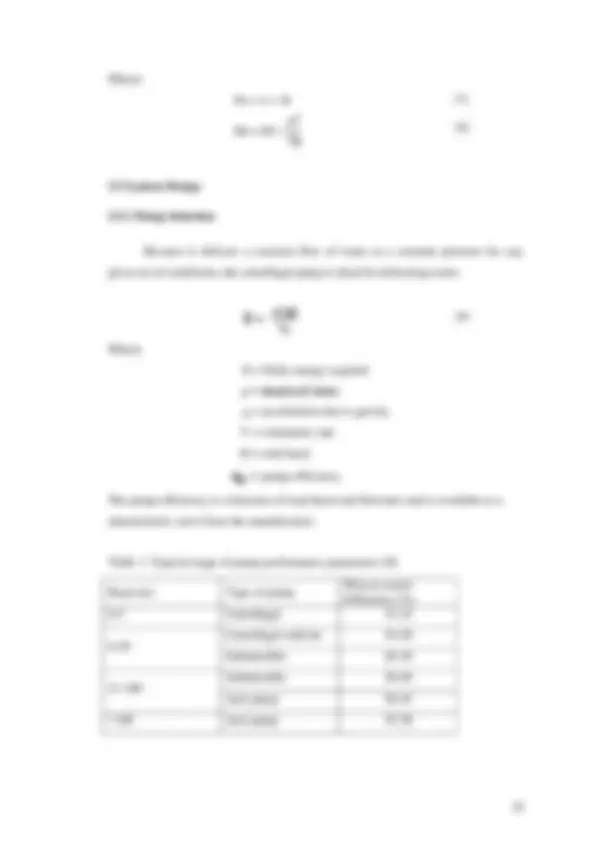
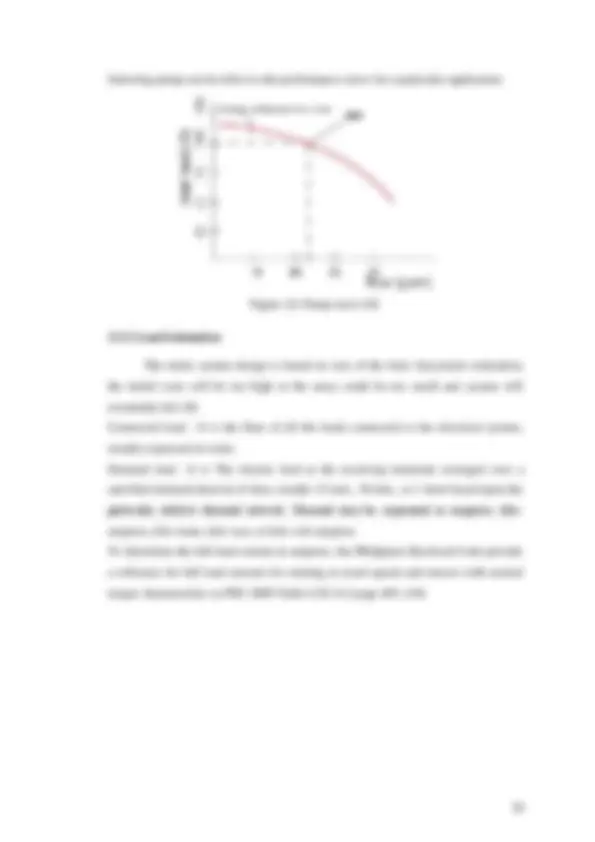
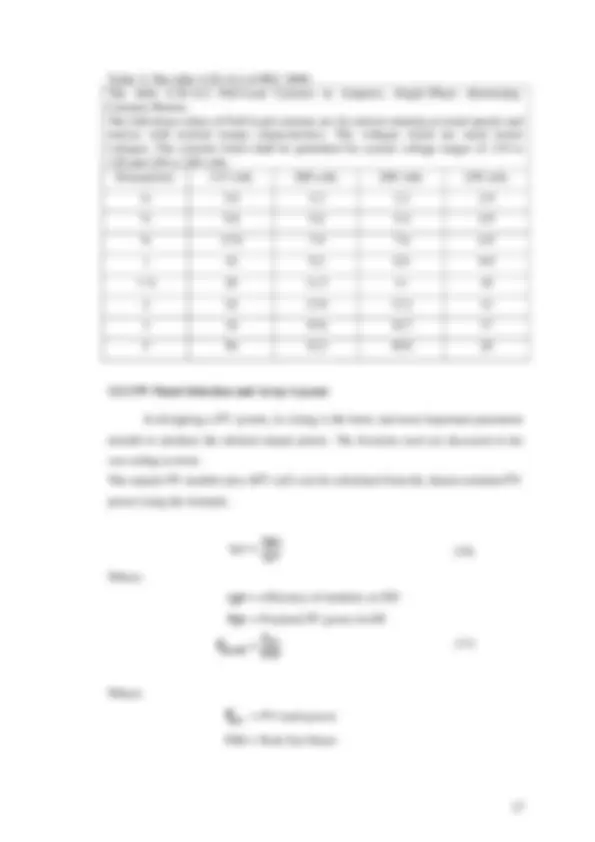
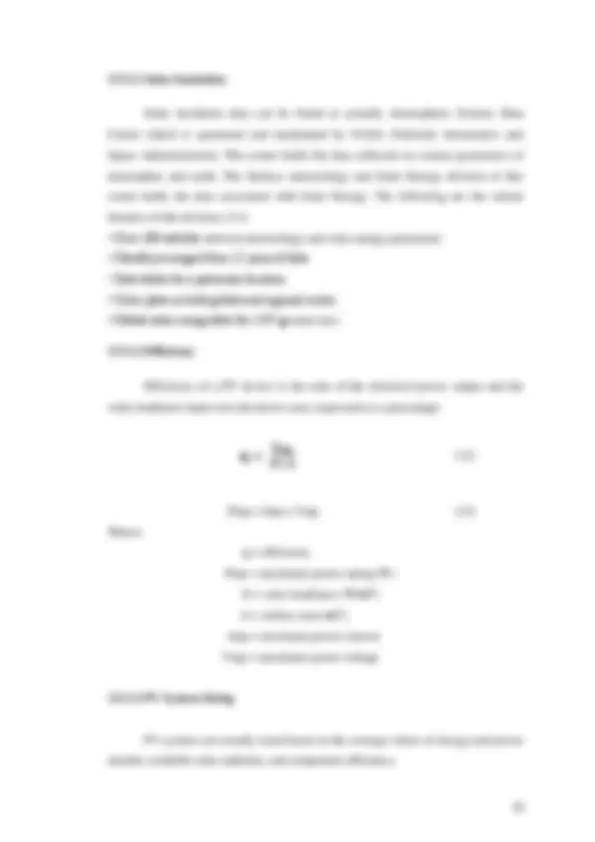


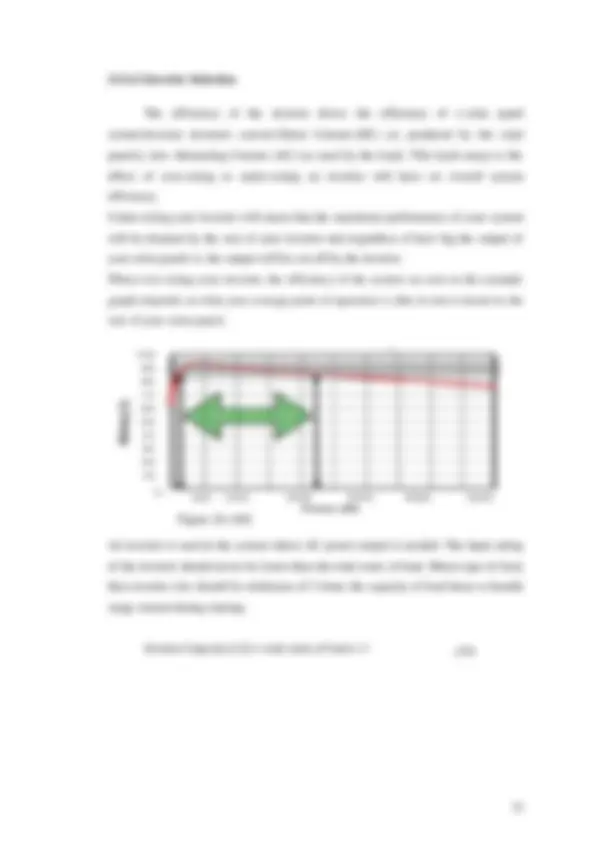

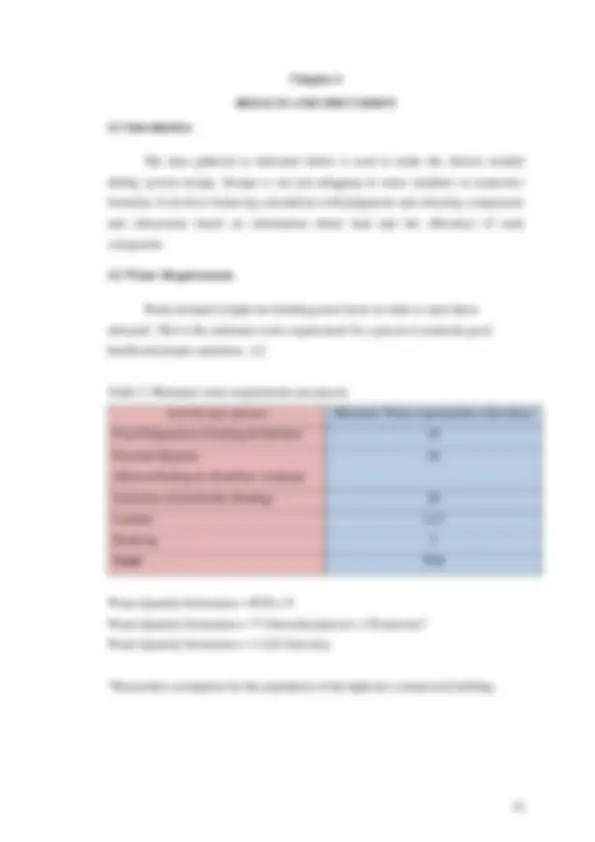

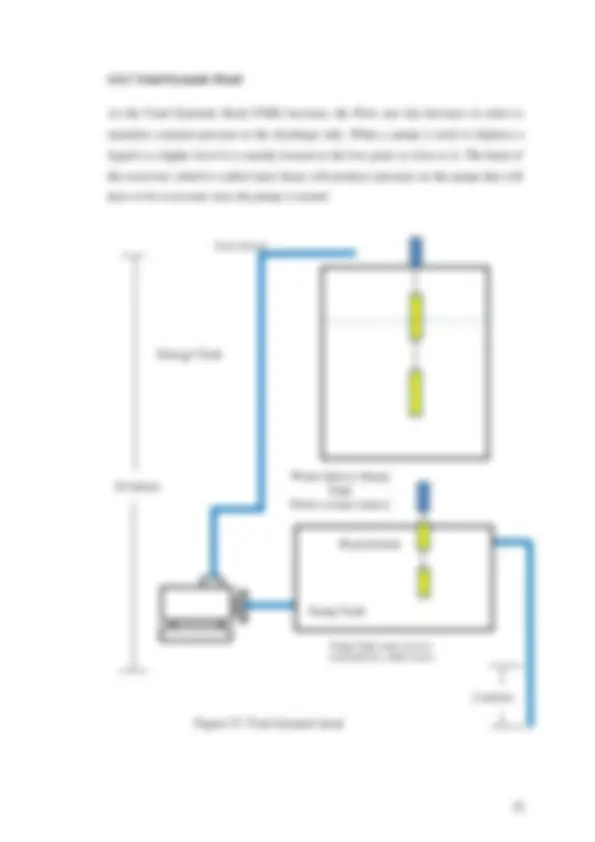
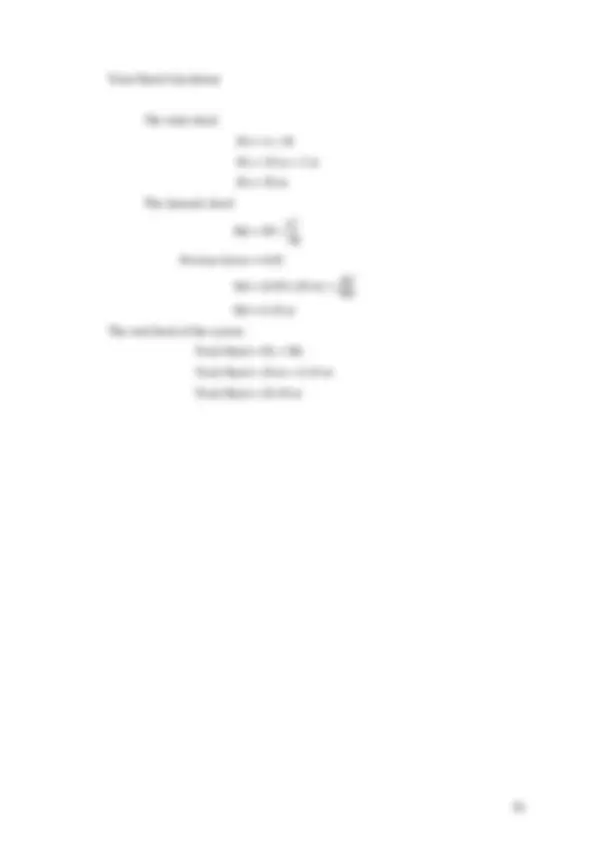
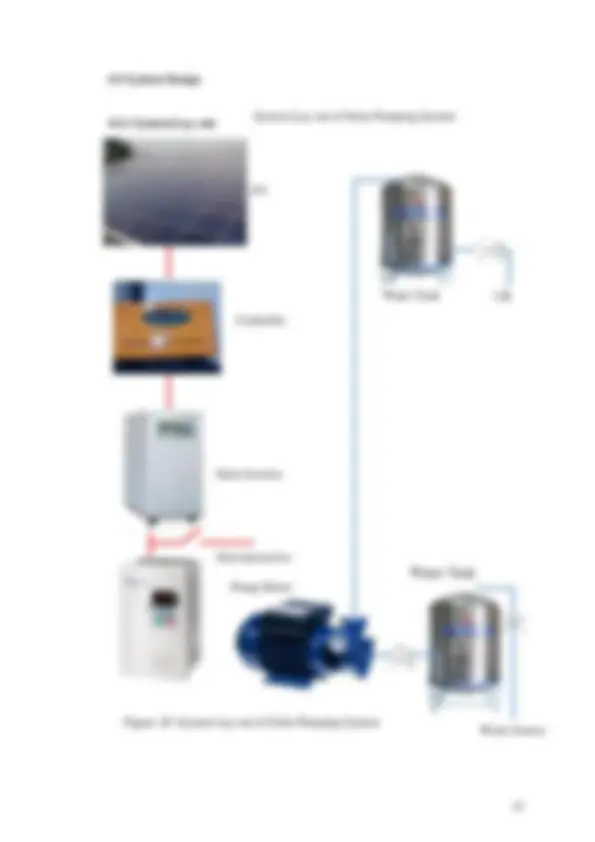
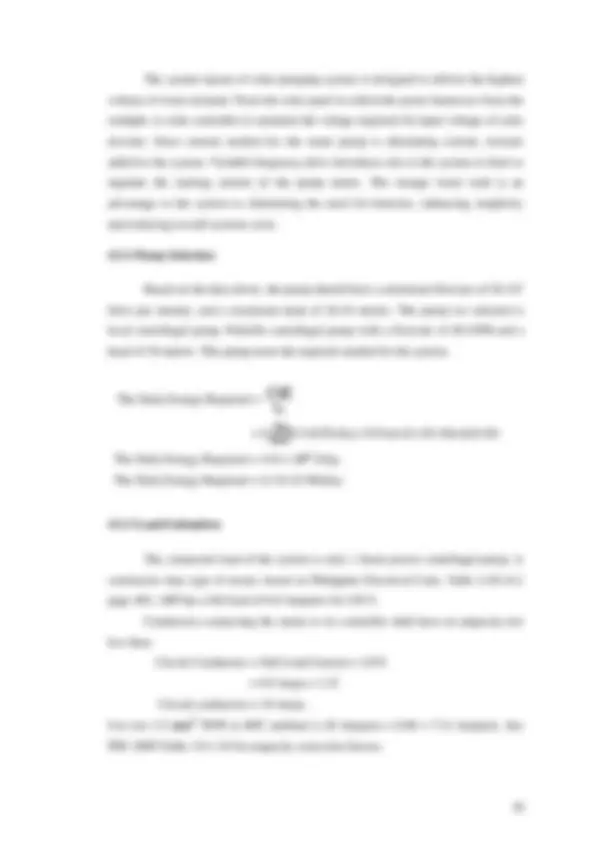
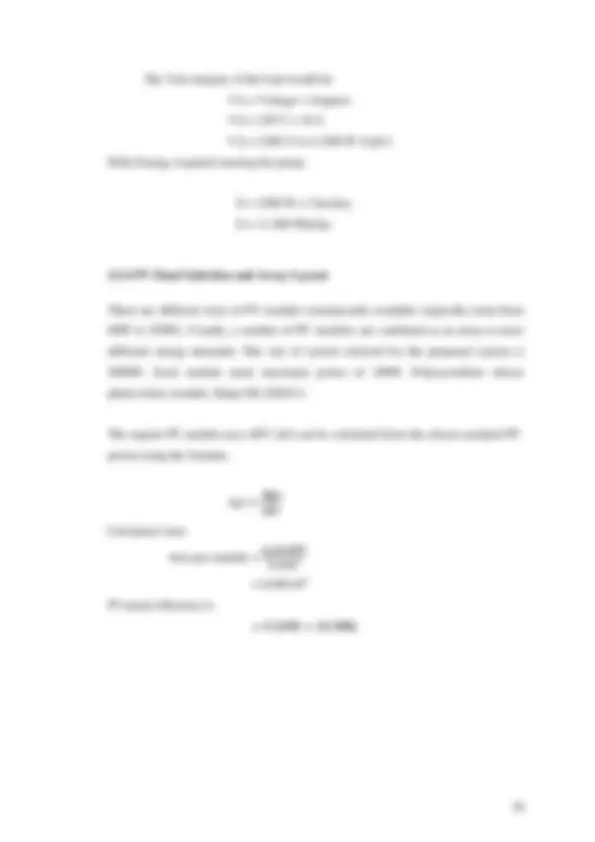
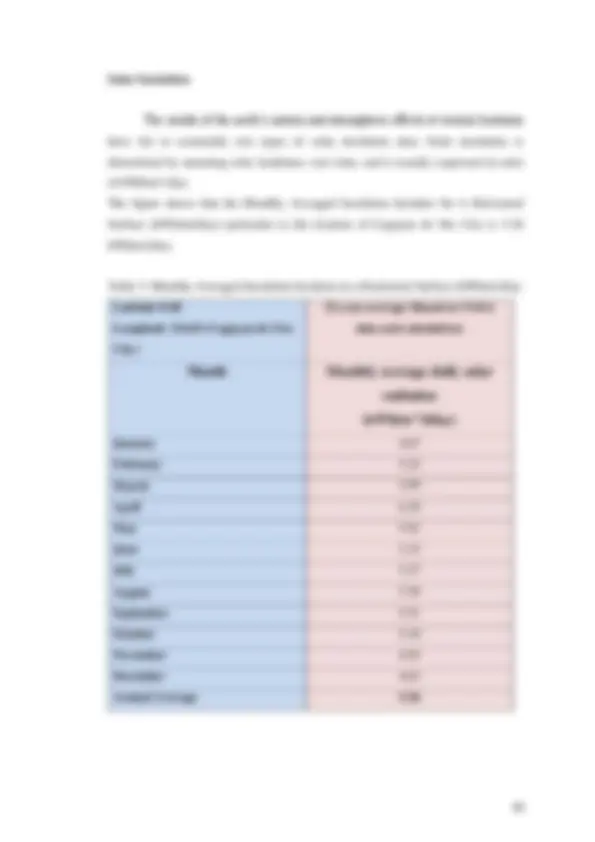
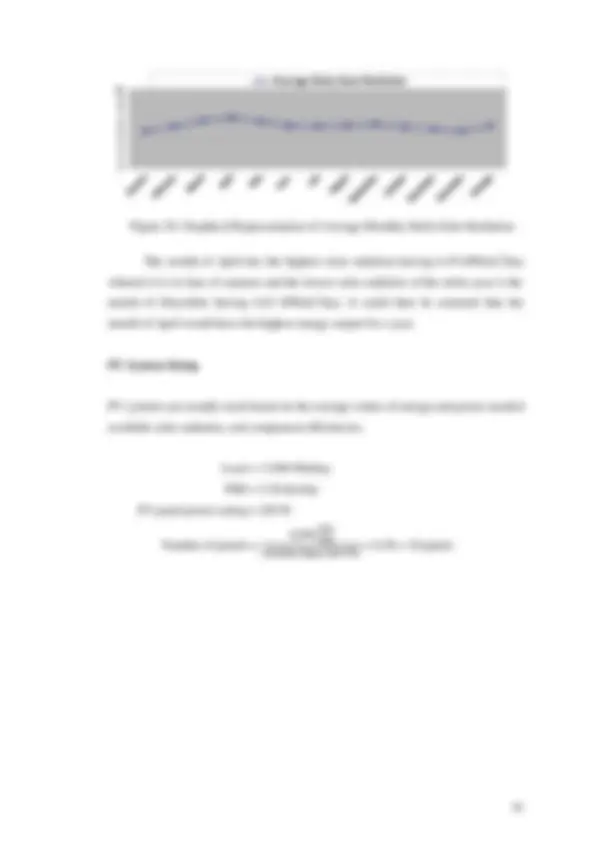

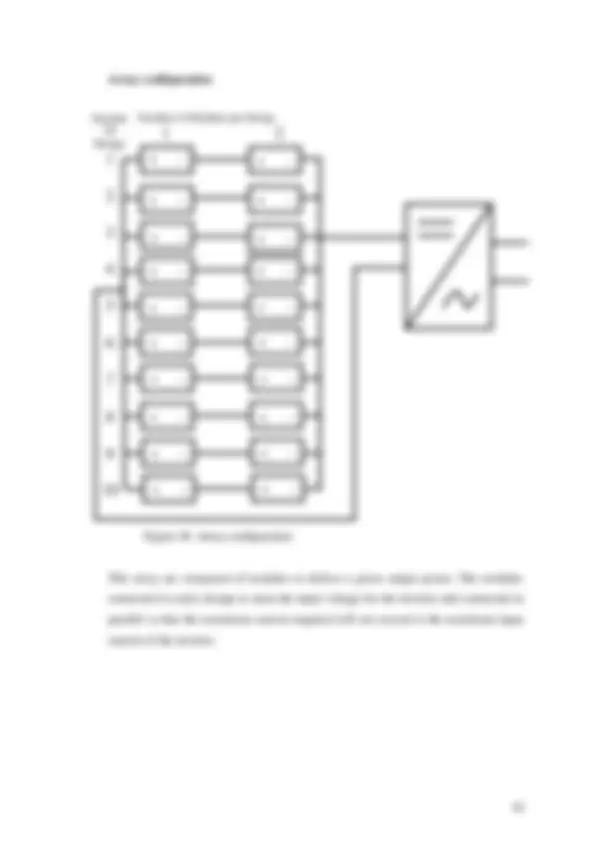
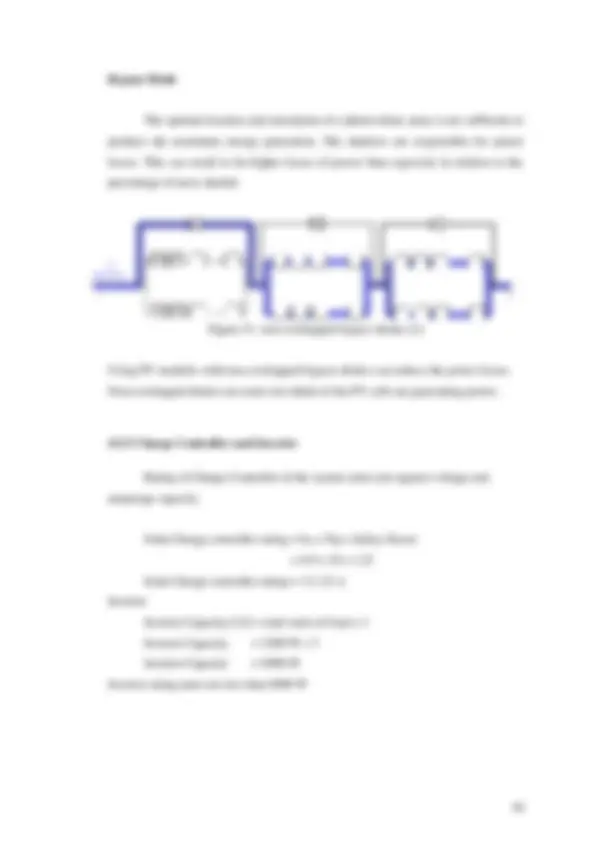
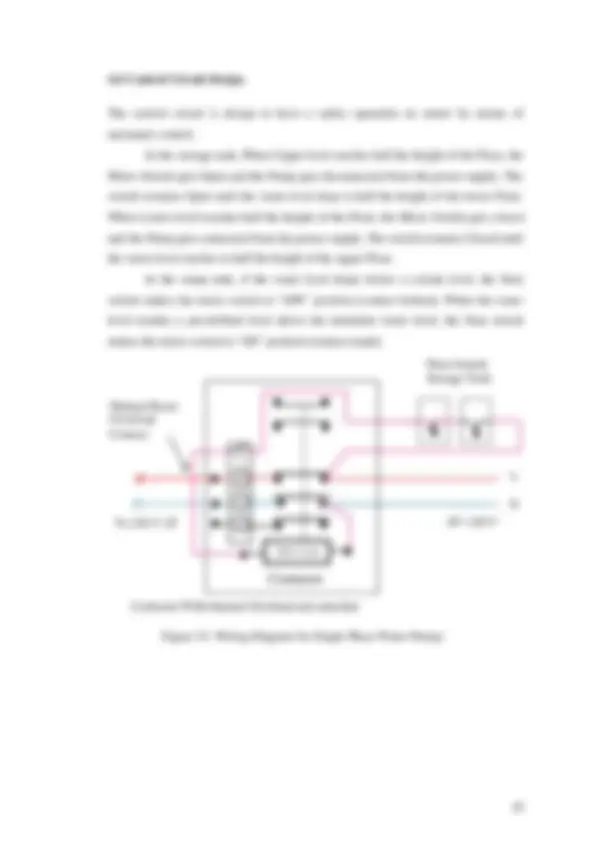
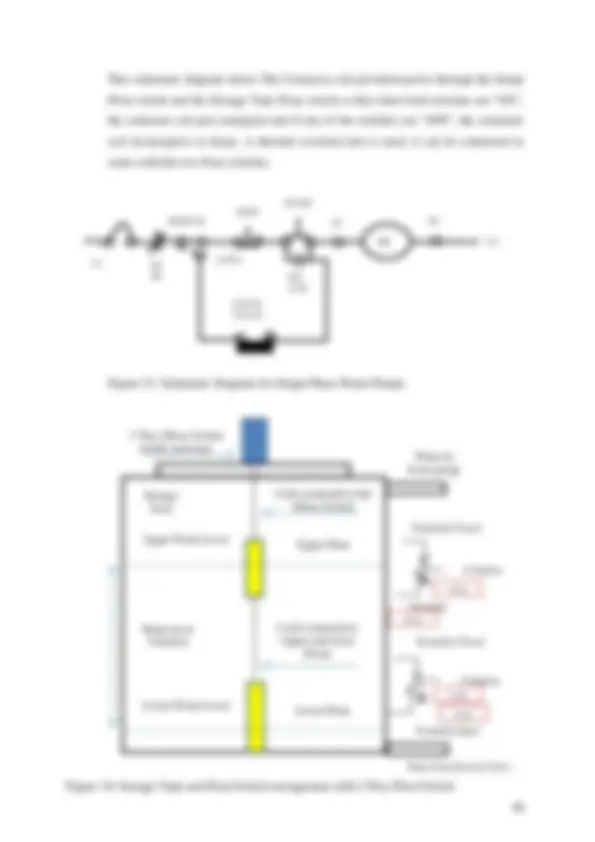
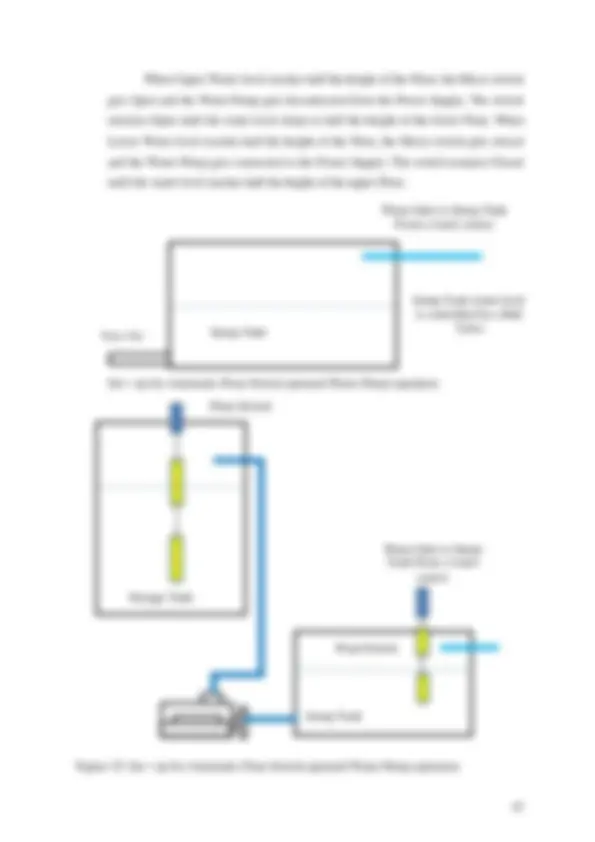
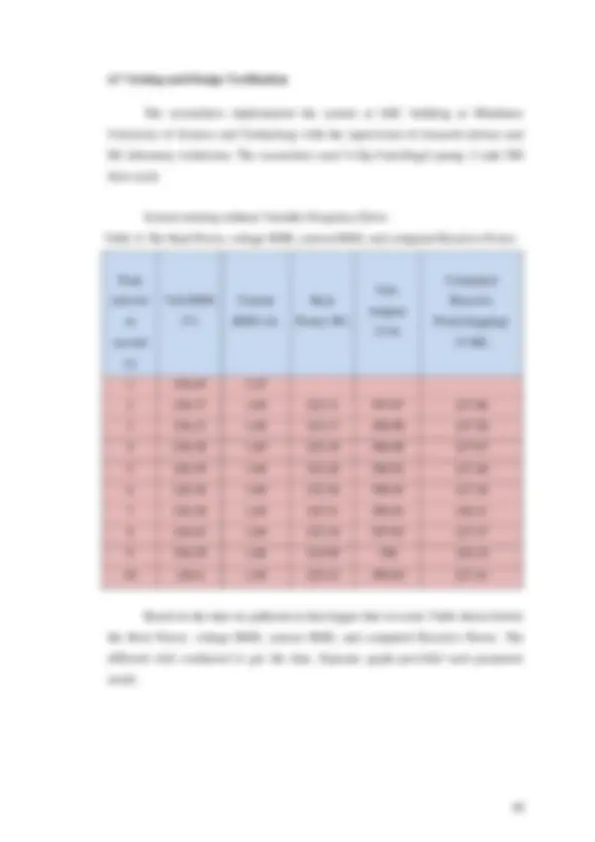
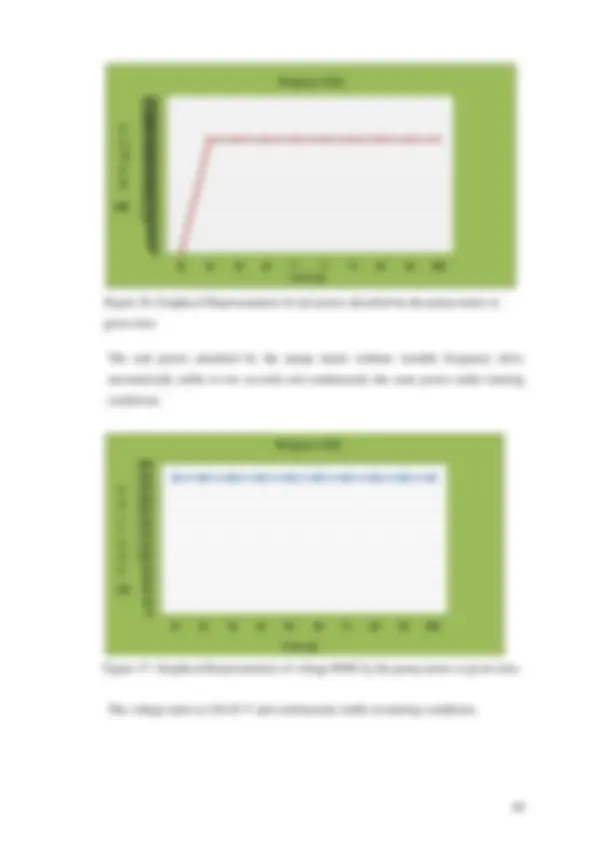
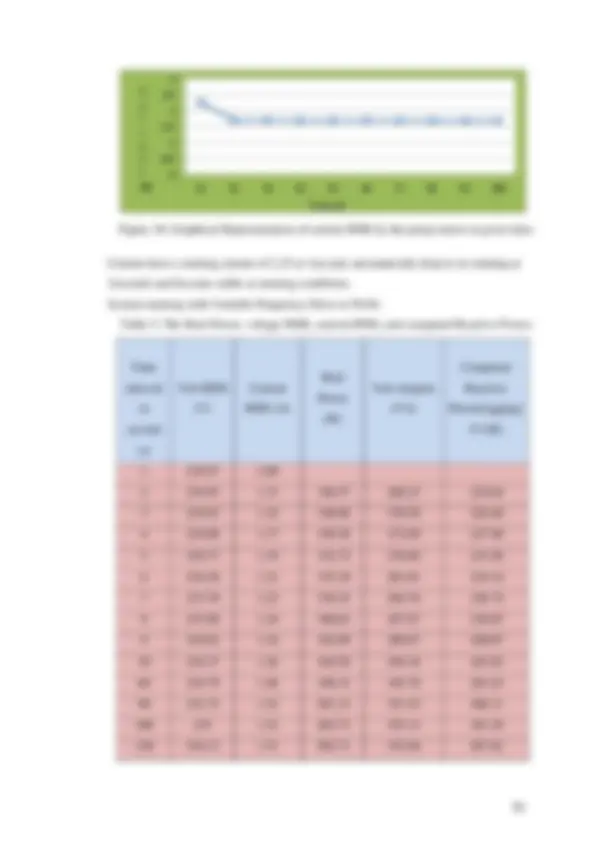
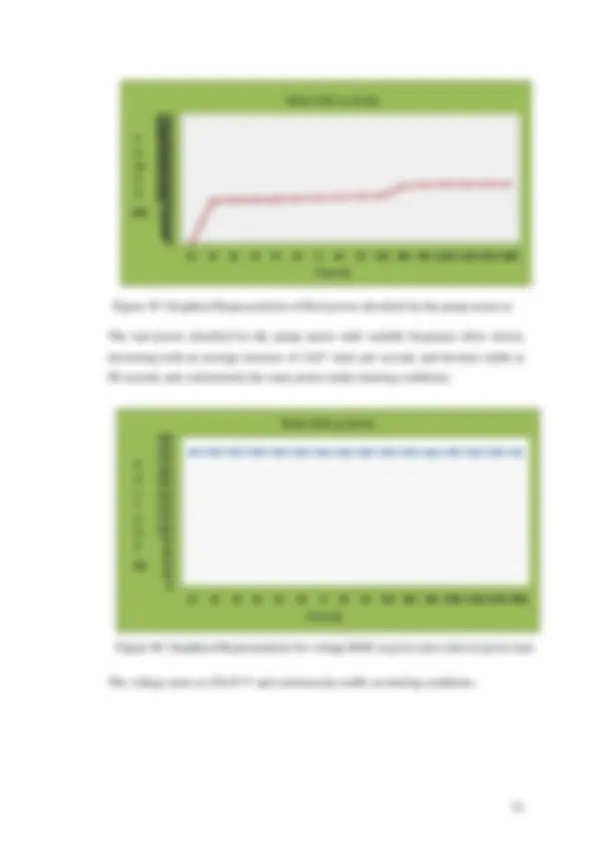

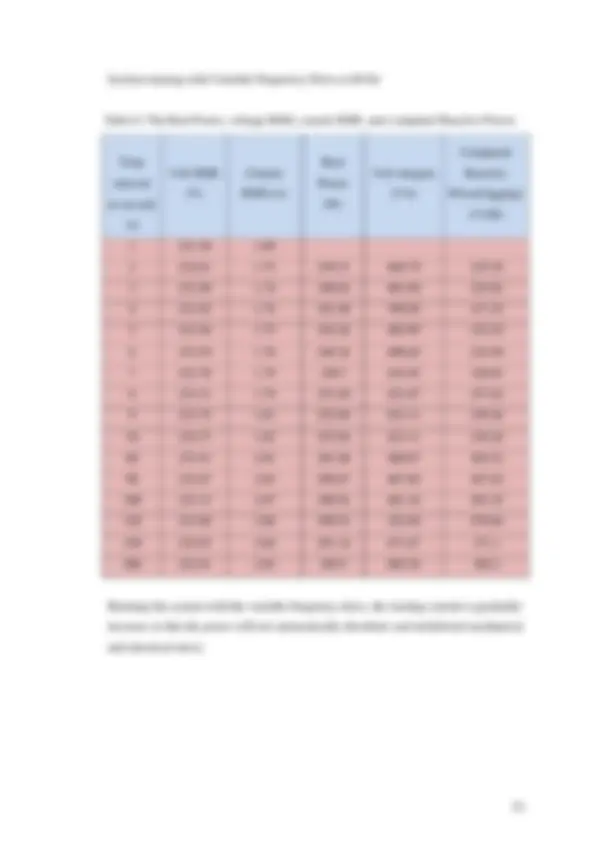
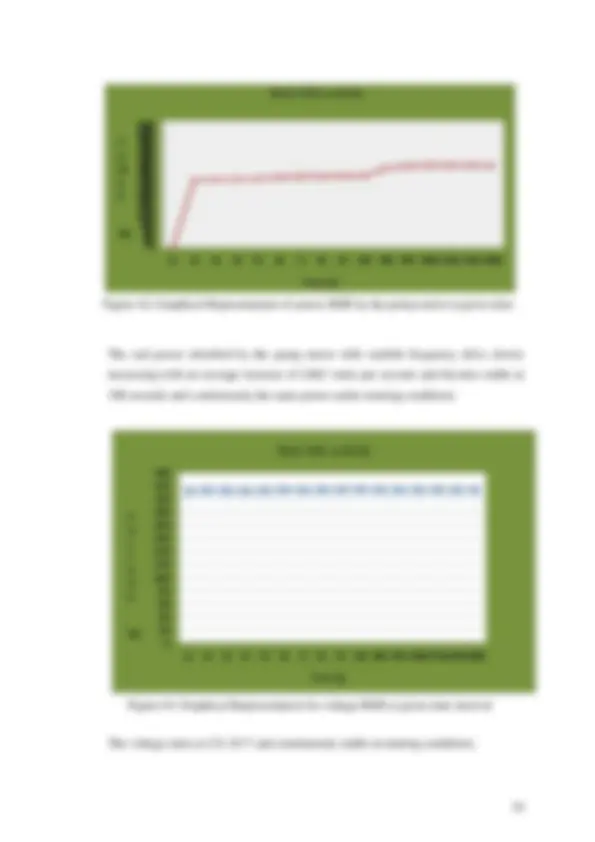
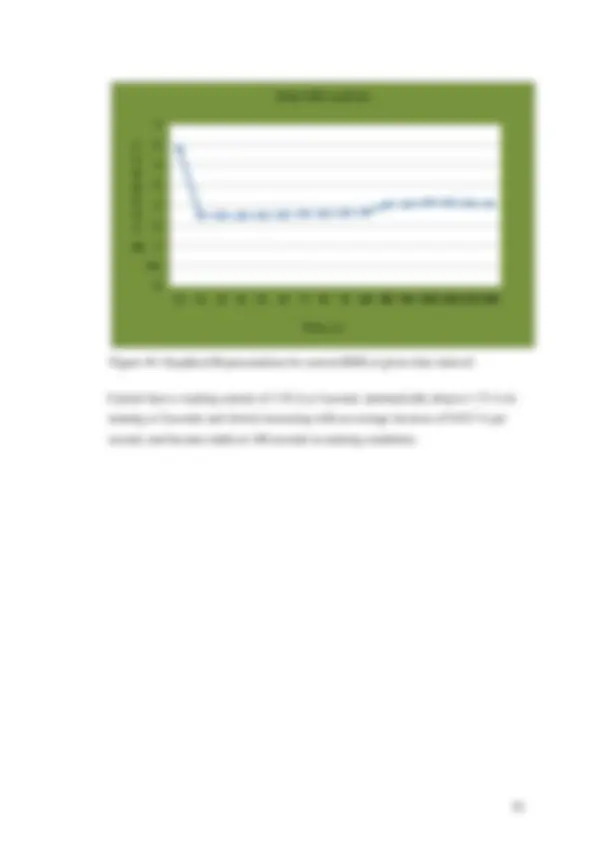











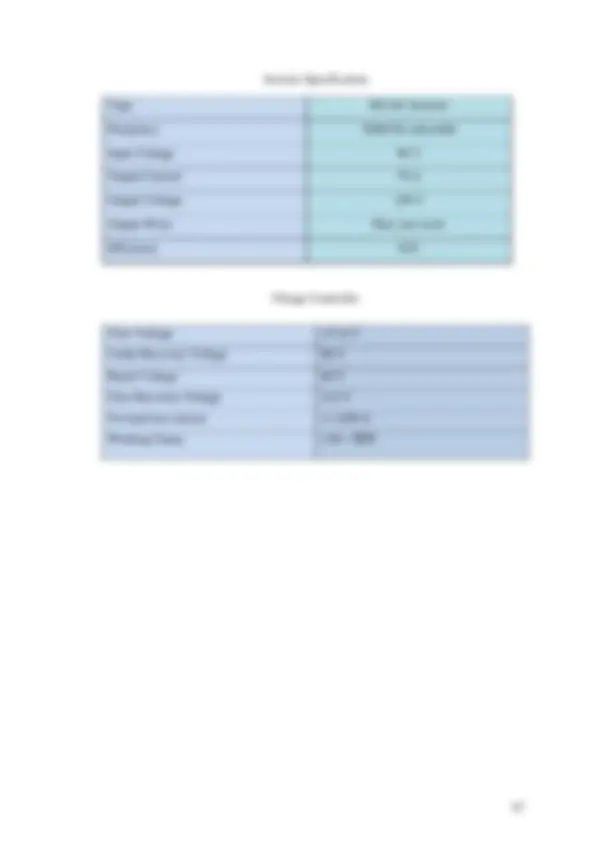


Study with the several resources on Docsity

Earn points by helping other students or get them with a premium plan


Prepare for your exams
Study with the several resources on Docsity

Earn points to download
Earn points by helping other students or get them with a premium plan
Community
Ask the community for help and clear up your study doubts
Discover the best universities in your country according to Docsity users
Free resources
Download our free guides on studying techniques, anxiety management strategies, and thesis advice from Docsity tutors
DESIGN OF INVERTER-BASED GRID INTERACTIVE SOLAR PUMPING SYSTEM FOR DOMESTIC APPLICATIONS
Typology: Thesis
1 / 67

This page cannot be seen from the preview
Don't miss anything!




























































Chapter 1
1.1 Introduction
Water resources are essential for satisfying human needs, protecting health, and ensuring food production, energy and the restoration of ecosystems, as well as for social and economic development and for sustainable development. Water pumping has a long history; so many methods have been developed to pump water with a minimum of effort. These have been utilized a variety of power sources, namely human energy, animal power, hydro power, wind, solar and fossil fuels for small generators. [1] Renewable energy is energy that is replenished by natural processes at a rate comparable or faster than its rate of consumption by humans. The energy contained in sunlight, called solar energy, can be converted into electricity as well. This energy is converted into electricity directly using devices based on Semiconductor materials, we call it photovoltaic (PV). A benefit of using solar energy to water pump systems is that increased water requirements for human consumptions, livestock and irrigation tend to coincide with the seasonal increase of incoming solar energy. The volume of water pumped by a solar-powered system in a given interval depends on the total amount of solar energy available in that time period. Specifically, the flow rate of the water pumped is determined by both the intensity of the solar energy available and the size of the PV array used to convert that solar energy into electricity. The solar pump can be pump directly into the system operation during daytime, or pump water to a storage tank or reservoir (which is part of the solar pumping solution) so that water is also available on cloudy days and at night. Since it will be with interactive to the grid, in case of water out during night and cloudy days due to high consumptions of water, the system may continue to operate and stored water to storage tank for the availability of water. When properly designed, these PV systems can also result in significant long- term cost savings and a smaller environmental footprint compared to conventional power systems.
1.2 Conceptual Framework
These designs of solar-powered water pumping system
Figure 1: These steps ensure that the system functions properly and that water is supply for the operation in the amounts at the location required.
Water source System layout^ Water Storage
Solar insolation and PV Location
Design flow rate for the pump
Pump Selection
Total Dynamic Head for the pump
PV Panel selection (^) PV array mounting and foundation
Water flow rate and Delivery point pressure
1.5 Objectives of the Study
This thesis could be possible solution of power shortage, availability of water through storage tank at the higher floors of building where water pressure of local water source could not reach the upper floors during the day because of water demand. Through grid interactive, existing power can be used during night and cloudy weather or if there is no sufficient supply of solar energy in the PV. Hence, this study aims to:
1.6 Scope and Limitations
The researchers mainly focus on the design of a solar pumping system of 1 HP centrifugal pump maximum load. The data and information may gather, through the results of actual experiments conducted. It is limited to the type of materials available to be used by researchers and costs that will be used in the design. For the purpose of this research we will used the solar PV panels of Mindanao University of Science and Technology, 5000 watts rated power at LRC building including the charge controller and inverter of the university.
Chapter 2 Review of Related Literature
2.1. Introduction
The sun is an average star. It has been burning for more than 4-billion years, and it will burn at least that long into the future before erupting into a giant red star. Some stars are enormous sources of X-rays; others mostly generate radio signals. The sun, while producing these and other energies, releases 95% of its output energy as light, some of which cannot be seen by the human eye. The peak of its radiation is in the green portion of the visible spectrum. Most plants and the human eye function best in green light since they have adapted to the nature of the sunlight reaching them. The sun is responsible for nearly all of the energy available on earth. The exceptions are attributable to moon tides, radioactive material, and the earth's residual internal heat. Everything else is a converted form of the sun's energy: Hydropower is made possible by evaporation-transpiration due to solar radiant heat; the winds are caused by the sun's uneven heating of the earth's atmosphere; fossil fuels are remnants of organic life previously nourished by the sun; and photovoltaic electricity is produced directly from sunlight by converting the energy in sunlight into free charged particles within certain kinds of materials. [2] Water pumping is one of the simplest and most appropriate uses for photovoltaic. From crop irrigation to stock watering to domestic uses, photovoltaic- powered pumping systems meet a broad range of water needs. Most of these systems have the added advantage of storing water for use when the sun is not shining, eliminating the need for batteries, enhancing simplicity and reducing overall system costs. Many people considering installing a solar water pumping system are put off by the expense. Viewing the expense over a period of 10 years, however, gives a better idea of the actual cost. By comparing installation costs (including labor), fuel costs, and maintenance costs over 10 years, you may find that solar is an economical choice. A solar-powered pumping system is generally in the same price range as a new windmill but tends to be more reliable and require less maintenance. A solar-powered pumping system generally costs more initially than a gas, diesel, or propane-powered generator but again requires far less maintenance and labor. [2]
some electrons (negatively charged atomic particles) to free them. A built-in-potential barrier in the cell acts on these electrons to produce a voltage (the so-called photovoltage), which can be used to drive a current through a circuit. [3]
2.3 Governing principles of Solar Energy
2.3.1 Solar Irradiance
The Sun is the fundamental driving force for energy in the Earth's climate system. It is of crucial importance to understand fully the conditions of its arrival at the top of the atmosphere and its transformation through the earth. The amount of solar power available per unit area is known as irradiance. Irradiance is a radiometric term for the power of electromagnetic radiation at a surface, per unit area. It is used when the electromagnetic radiation is incident on the surface. Irradiance fluctuates according to the weather and the sun’s location in the sky. This location constantly changes through the day due to changes in both the sun’s altitude (or elevation) angle and its azimuth (or compass) angle. [1]
a = the sun’s altitude or elevation angle 𝝰 = the sun’s azimuth angle
Figure 2 : Sun’s location in the sky [1]
2.3.2 Solar Constant
The solar constant is the amount of incoming solar electromagnetic radiation per unit area, measured on the outer surface of Earth's atmosphere on a plane perpendicular to the rays. The solar constant includes all types of solar radiation, not just the visible light. It is estimated to be roughly 1,366 watts per square meter (W/m²) according to satellite measurements, though this fluctuates by about 6.9 % during a year (from 1,412 W/m² in early January to 1,321 W/m² in early July) due to Earth's varying distance from the Sun. For the entire planet (Earth has a cross section of 127,400,000 km²), the power is (1366 W/m2 x 1.274×1014 m2) 1.740×1017 W, plus or minus 3.5 %. The solar constant does not remain constant over long periods of time. The average value cited, 1,366 W/m², is equivalent to 1.96 calories per minute per square centimeter, or 1.96 langleys (Ly) per minute. [1]
Figure 3: The map shows the amount of solar energy in hours, received each day on an optimally tilted surface during the worst month of the year. [2]
Figure 5: Solar Spectrum [3]
2.3.5 Solar Insolation
The results of the earth’s motion and atmospheric effects at various locations have led to essentially two types of solar insolation data. These are daily and hourly. Solar irradiance is related to power per unit area where as solar insolation is related to radiant energy per unit area. Solar insolation is determined by summing solar irradiance over time, and is usually expressed in units of kWh/m2 /day. [1]
Average Daily Solar Radiation
To provide long-term average daily solar radiation data, an average of daily solar radiation is calculated for each month over a period of typically 30 years. This data is useful both in predicting long-term performance and in analyzing the economics of solar energy systems. The actual average daily solar radiation for a given month may vary significantly from the long-term average for that month. [1]
Peak Sun Hours
The number of peak sun hours per day at a given location is the equivalent number of hours at peak sun conditions (i.e., at 1 kW/m2) that produces the same total insolation as actual sun conditions. [1]
Figure 5 below shows how Peak Sun Hours is determined by constructing a graph having the same area as that for the actual irradiance versus time.
Figure 6: Peak sun hours [1]
2.3.6 Direct and Diffuse Solar Radiation
Sunlight coming from the sun is reduced by about 30% before it reaches the earth due to scattering by atmospheric particles, scattering by aerosol, dust particles etc., absorption by atmospheric gases. It is common to consider separately the ‘direct’ (or beam) radiation coming from solar disk and the ‘diffuse’ radiation from elsewhere in the sky with their sum known as ‘global’ radiation. The component of the radiation coming from all direction in the sky is diffused. When the sun is directly overhead, it has diffuse component of about 10% when skies are clear. Percentage increases with increased Air Mass. [1]
2.4 Photovoltaic Cell, Module, and Array
Photovoltaic cells are connected electrically in series and/or parallel circuits to produce higher voltages, currents and power levels. Photovoltaic modules consist of PV cell circuits sealed in an environmentally protective laminate, and are the fundamental building blocks of PV systems. Photovoltaic panels include one or more PV modules assembled as a pre-wired, field-installable unit. A photovoltaic array is the complete power-generating unit, consisting of any number of PV modules and panels. [4]
Figure 8: Monocrystalline Solar Cell and Panel.
2.4.2. Polycrystalline solar cells
Polycrystalline panels are made up from silicon offcuts, moulded to form blocks and create a cell made up of several bits of pure crystal. Because the individual crystals are not necessarily all perfectly aligned together and there are losses at the joints between them, they are not quite as efficient. However, this mis-alignment can help in some circumstances, because the cells work better from light at all angles, in low light, etc.
Figure 9: Polycrystalline Solar Cell and Panel
2.4.3. Thin Film Solar Cells
The term "Thin film solar panels" refers to the fact that these types of solar panels use a much thinner level of photovoltaic material then mono-crystalline or multi-crystalline solar panels. Thin film solar cells consist of layers of active materials about 10 nm thick compared with 200- to 300-nm layers for crystalline-silicon cells.
The semiconductor junctions are formed in different ways, either as a p-i-n device in amorphous silicon (A-Si), or as a hetero-junction (e.g. with a thin cadmium sulfide layer) for CdTe and CIGS panels. A transparent conducting oxide layer (such as tin oxide) forms the front electrical contact of the cell, and a metal layer forms the rear contact. [5]
Figure 10: Thin Film Solar Cell
2.5 Type of Photovoltaic system
Solar Photovoltaics convert daylight into electricity and can be used in Grid- Tied Solar PV Systems where renewable electricity is fed directly into the properties power supply, excess electricity being exported (sold) to energy companies using the National Grid and in Off-Grid situations where electricity is generated and stored in batteries for use locally. [1]
2.5.1. Grid-Tied Solar Photovoltaic (PV) Systems
A grid-connected photovoltaic power system or grid-connected PV system is an electricity generating solar PV system that is connected to the utility grid. A grid- connected PV system consists of solar panels, one or several inverters, a power conditioning unit and grid connection equipment. They range from small residential and commercial rooftop systems to large utility-scale solar power stations. Unlike stand-alone power systems, a grid-connected system rarely includes an integrated battery solution, as they are still very expensive. When conditions are right, the grid-connected PV system supplies the excess power, beyond consumption by the connected load, to the utility grid. [1]
come in many sizes, from microscopic for use in medical applications to large industrial pumps. [9]
2.6.1. Centrifugal Pump
Centrifugal Pump: A centrifugal pump may be defined as one in which an impeller rotating inside a close – fitting case draws in the liquid at the centre and, by virtue of centrifugal force, throws out through an opening at the side of the casing. In operation, the pump is filled with water and the impeller rotated. The blades cause the liquid to rotate with the impeller and, in turn, import a high velocity to the water particles. The centrifugal force causes the water particles to be thrown from the impeller reduces pressure at the inlet, allowing more water to be drawn in through the suction pipe by atmospheric pressure. The liquid passes into the casing, where its high velocity is reduced and converted into pressure and the water is pumped out through the discharge pipe. The conversion of velocity energy into pressure energy is accomplished either in a Volute casing or in a Diffuser. [9]
Figure 13: A small, electrically powered pump [9]
Figure 14: Centrifugal Pump [9]
2.7 Water Requirements
A World Bank (1980) study on basic needs and the urban poor reported that "neither personal hygiene nor public health" would require water for domestic consumption greater than 100 liters per capita per day (l/c/d). This estimate was corroborated by the United States Department of Agriculture study in 1991, which indicated that basic household activities such as cooking, drinking, and washing can be met by less than 94.5 liters. More recent studies give estimates of basic water requirement between 50 and 100 l/c/d. [6]
2.8 Solar inverter
PV inverter, or Solar converter, converts the variable direct current (DC) output of a photovoltaic (PV)solar panel into a utility frequency alternating current (AC) that can be fed into a commercial electrical grid or used by a local, off- grid electrical network. It is a critical BOS–component in a photovoltaic system, allowing the use of ordinary AC-powered equipment. Solar inverters have special functions adapted for use with photovoltaic arrays, including maximum power point tracking and anti-islanding protection. [10]
Figure 15: Solar inverter [10]
2.8.1 Solar pumping inverters
Advanced solar pumping inverters convert DC voltage from the solar array into AC voltage to drive submersible pumps directly without the need for batteries or other energy storage devices. By utilizing MPPT (maximum power point tracking), solar pumping inverters regulate output frequency to control the speed of the pumps in order to save the pump motor from damage.
2.10 Water Storage
A water tank is a container for storing liquid. The need for a water tank is as old as civilization, providing storage of water for drinking water, irrigation agriculture, fire suppression, agricultural farming, both for plants and livestock, chemical manufacturing, preparations well as many other applications. Water tank parameters include the general design of the tank, and choice of construction materials. Various materials are used for making a water tank: plastics (polyethylene, polypropylene), fiberglass, concrete, stone, steel (welded or bolted, carbon, or stainless), Earthen ponds function as water storage. Water tanks are an efficient way to help developing countries, LEDCs, to store clean water. [10]
2.12 Magnetic Contactor
A magnetic contactor is an electrically controlled switch used for switching a power circuit. It has main contacts used for power circuit and auxiliary contact used for control circuit. [13]
Figure 19: Magnetic Contactor [13]
Figure 18: Water Tank [10]
2.13 Variable-frequency drive (VFD)
also termed adjustable-frequency drive, variable-speed drive, AC drive, micro drive or inverter drive is a type of adjustable-speed drive used in electro- mechanical drive systems to control AC motor speed and torque by varying motor input frequency and voltage.
VFDs are used in applications ranging from small appliances to the largest of mine mill drives and compressors. However, around 25% of the world's electrical energy is consumed by electric motors in industrial applications, which are especially conducive for energy savings using VFDs in centrifugal load service. [14]
Figure 20: Variable-frequency drive [14]
2.14 Existing Solar-Powered Pumping System
There are two basic types of solar-powered water pumping systems, battery- coupled and direct-coupled. Battery-coupled water pumping systems consist of photovoltaic (PV) panels, charge control regulator, batteries, pump controller, pressure switch, tank, and DC water pump. The electric current produced by PV panels during daylight hours charges the batteries, and the batteries in turn supply power to the pump anytime water is needed. The use of batteries spreads the pumping over a longer period of time by providing a steady operating voltage to the DC motor of the pump. Thus, during the night and low light periods, the system can still deliver a constant source of water for livestock. [15]